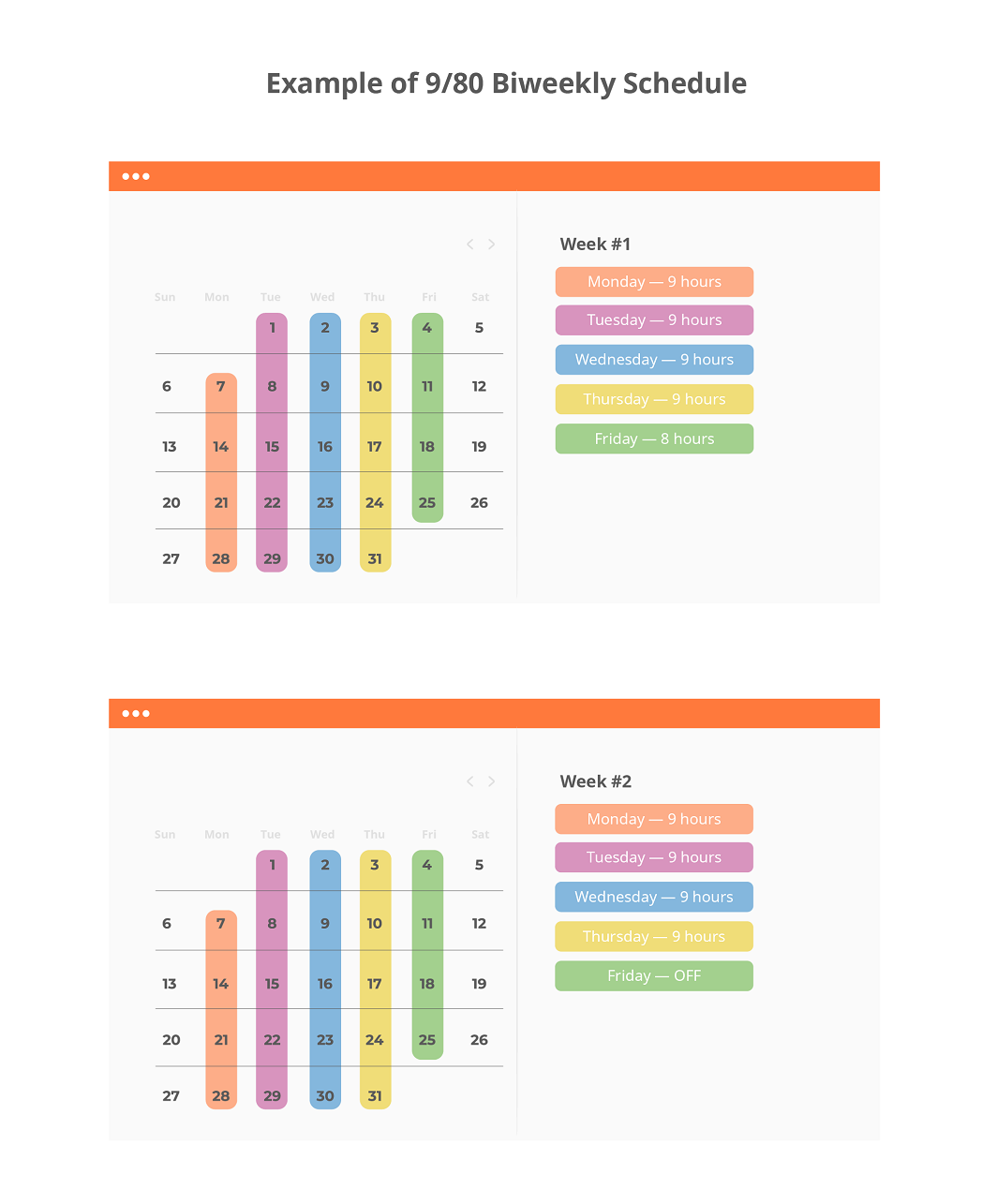

While this can become less of an issue as employees adjust to the new schedule, it might cause challenges. Employees might struggle to focus and with their performance after a longer day at work. This is especially the case during the additional hour at the end of the day. While 9/80 schedules can increase productivity, it can also decrease productivity. If employers split the day off, there might also be a lack in coverage. There might not be enough employees to meet demand, for example. When a business has fewer employees, it may be difficult to implement a 9/80 work schedule. This is a challenge for small businesses in particular when it comes to staffing gaps. It also means that days become even longer if workers need to work overtime.Īnother disadvantage is less coverage. This could result in added stress and lead to burn-out. While employees get a day off, they also need to work an extra hour each day. Operational requirements may also prevent employers from adopting this type of arrangement.Ī significant challenge with a 9/80 schedule is the longer workday. Some businesses, for example, have unique schedule requirements. Disadvantages of the 9/80 work scheduleĪ 9/80 schedule does not always work for every employee, employer or sector. This help employees find more time for personal appointments during the week without taking time off during the week. By adopting this arrangement, employers provide workers with an extra two days off each month. Like other flexible work arrangements, the 9/80 schedule helps improve work-life balance. This means fewer cars on the street and less time spent on public transport. With two extra days off each month, employees do not have to travel to work. Extended weekends may also reduce vacation requests.Ī 9/80 schedule also means less commuting. With increased morale, employers often see fewer sick days. The prospect of an extended weekend can also help boost morale and allow employees to spend more time with families or pursuing personal passions. The additional day off gives employees an incentive to work harder, for example. Similarly, time off could be split to allow for half-days off so there is always coverage in the workplace.Īnother advantage is an increase in productivity. For example, an employer could give some employees one day off while others have another day off.
#9 80 WORK SCHEDULE HOW TO#
Although the basic principle of the 9/80 schedule is a day off, each employer has the flexibility to determine how to schedule the time off depending on operational needs. It also offers greater flexibility and can increase productivity.Ī 9/80 schedule offers flexibility. This type of schedule promotes better work-life balance and offers more time to rest, for example. There are several advantages to a 9/80 schedule, including the opportunity to try something new. The hours represent work hours and do not include breaks, including for lunch. Here’s how a 9/80 work schedule might work.

This also helps with tracking overtime in any given week. The second four-hour block of that day is applied to the second week. Start and end times will vary depending on each company’s individual operational needs.įor payroll, employers apply the first half of the 8-hour work day in the first week. At the end of the two-week cycle, an employee earns a day off on Friday. For 8-hour work days, the day is split with two four-hour blocks along with an hour for lunch. In practice, days are split with one four-hour block and one five-hour block with one hour for lunch on 9-hour work days.

Essentially, employees work longer days to earn a day off or a pair of shorter work days.
#9 80 WORK SCHEDULE FULL#
There is the option for employees to have a full day off every other week or a 4-hour day every week.
#9 80 WORK SCHEDULE PLUS#
Generally, there are eight 9-hour days and one 8-hour day plus one day off. It divides 80 work hours among nine days. The 9/80 work schedule revolves around a two-week cycle. By offering an alternative work schedule, this option also attempts to increase employee engagement by responding to requests for alternative work arrangements. At the same time, employees still work 80 hours during the two weeks just like a standard 9-to-5 arrangement. Instead of working ten days over two weeks, employees work just nine days. What is a 9/80 work schedule?Ī 9/80 schedule aims to improve work-life balance for employees while also increasing productivity. Rather than a standard 40-hour work week, other employers are adopting alternatives like a 9/80 schedule. Most companies use a 9-5 schedule, which focuses on 5-day work weeks and 8-hour workdays. With more workers looking for flexible work arrangements, businesses are exploring new ways of scheduling.


 0 kommentar(er)
0 kommentar(er)
